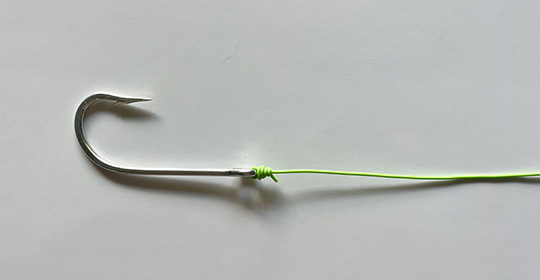5 Saltwater Fishing Knot Tying Techniques for Inshore Anglers
By Debbie Hanson
Sep 27, 2023
Basics of saltwater fishing knot tying techniques, why five simple knots are among the most popular for inshore fishing, which knots to use with bait or lures.
There are many saltwater fishing knot tying techniques you can learn, but which knots should you start with? Most new saltwater anglers begin by learning how to fish off the beaches, in shallow bays, or from a fishing pier. Knowing this, let’s focus on five of the top knot tying techniques for inshore saltwater fishing.
As you learn about each of these knots, keep in mind that there are plenty of saltwater fishing knot tutorials online that you can use when you are ready to practice tying them.
1. Uni Knot

The Uni Knot tying technique is good to use when connecting braided fishing to fluorocarbon or monofilament leader material. This knot is an easy knot to tie when attaching your main line to your fishing reel or for attaching your line to a hook. When using the Uni Knot as a terminal knot, make 8-10 wraps (instead of the standard 5-6 wraps) so that the knot snugs down tightly and neatly. The Uni Knot is on this list of saltwater fishing knot tying techniques because it is a very versatile knot that is simple to tie.
2. Improved Clinch Knot

When it comes to strong terminal knots that are easy to tie, the Improved Clinch Knot always ranks at the top. The improved clinch knot is a clinch knot that includes an extra step to help secure the knot in place. Instead of bringing the end of your line through the loop closest to the eye and then securing the knot, you continue by bringing the line back up through the large loop you created next to the wraps. If you haven’t tried tying an Improved Clinch Knot, you can watch saltwater fishing knot videos online to learn how to tie it.
3. Non-Slip Loop Knot

Inshore anglers who fish with artificial baits and lures want to learn how to tie the Non-Slip Loop Knot so that their offerings can move more naturally in the water column. This knot is a good one to remember when using baitfish-imitating lures to target redfish or spotted seatrout. Use the Non-Slip Loop Knot with lures that do not have a split ring attached. If you use a lure that does have a split ring attached, a snug knot (like the Improved Clinch Knot) is a better type of knot to use.
4. Double Uni Knot

The Double Uni Knot tying technique is used to join two lines of similar diameters (for example, braided fishing line to a monofilament or fluorocarbon leader). One of the helpful saltwater fishing knot tips to remember when tying braided line to monofilament or fluorocarbon leader is to make a few more turns with the braided line than with the monofilament or fluorocarbon leader since the braid is thinner – this will give you a more secure connection.
5. Palomar Knot
When tied correctly, the Palomar Knot provides a snug, double connection around the eye of your hook. This terminal knot is a good choice when saltwater fishing because it maintains a high breaking strength (95%) and works with all types of line -- braid, monofilament, and fluorocarbon. Make sure that the lines are not crossed and that you wet the knot to prevent friction when snugging it down.
Now that you know which five saltwater fishing knot tying techniques are helpful for inshore anglers to know, pick one and start practicing it!










